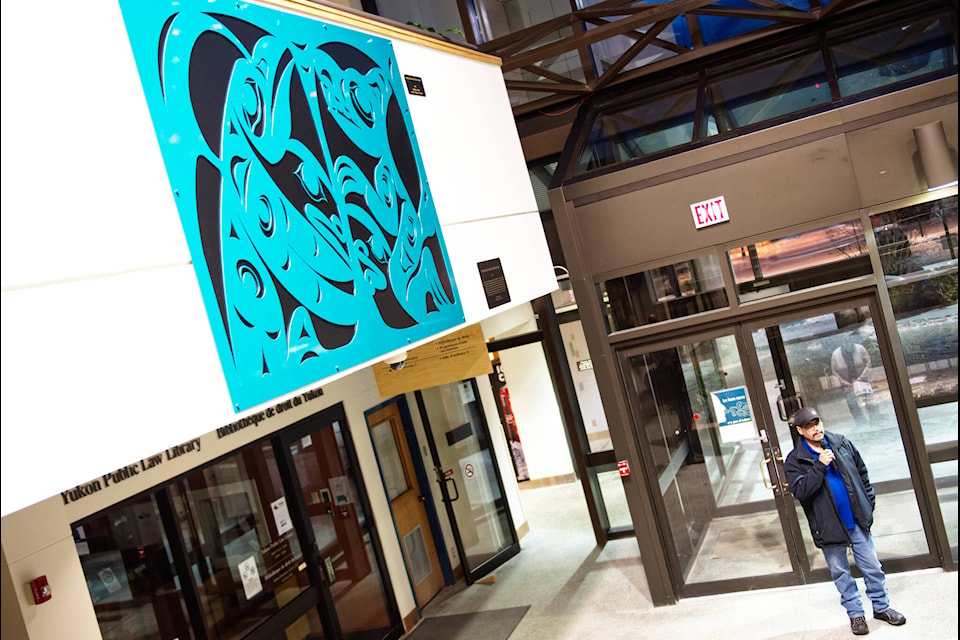Four pieces of art were officially unveiled at the Whitehorse Law Courts on Nov. 28.
Each piece was created by Yukon First Nations artists and depicted themes of family, community support, hardship and justice.
“Yukon First Nations are over-represented in the justice system and projects like this allow us to work with our partners to enhance cultural inclusion,” said Peter Johnston, Grand Chief of the Council of Yukon First Nations, in a statement.
Two new pieces were presented to a reception of about 25 people on Nov. 28.
In the atrium, two drums hang on either side of a land acknowledgment. Entitled Balance, the drums are intended to reframe the symbolism of justice, which is commonly depicted as a set of scales.
“In Indigenous culture ‘Justice’ is not measured by who or what is weighed and found wanting but in the acceptance of an individual’s and community’s potential that is commonly expressed in the circular representation of sacred continuity in and through Indigenous healing practices,” according to a pamphlet introducing the art.
The decolonized depiction of justice shows a wolf on one side and crow on the other, representing the artists from the Wolf and Crow clans. Shirley Adamson, of the Wolf clan, is an Elder female artist, while Doronn Fox is young and male, establishing balance in the collaboration.
Eugene Alfred’s Wolf and Crow on the other end of the atrium incorporates similar imagery. The turquoise image of wolf and crow represent the male and female sides of a family unit, respectively. The green-blue colour traditionally represents sky, water and plants.
“Many Yukon First Nations families were interrupted by the Residential School system and other oppressive policies,” reads the piece’s description. “The family unit remains at the core of Yukon First Nations and is central to healing.”
Upstairs, one of 10 eagle feathers donated by Gwitchin Elder Randall Tetlichi is framed. The feathers were introduced in March as an option for swearing an oath, as an alternative to the bible.
“When it is used in court, the feather represents the Creator,” according to a plaque accompanying the framed feather. “The ribbons represents our connection with the Creator and the helpers. The moose hide represents helping people to be grounded and honest and to make helpful decisions. When people hold the feather, they have no choice but to be honest.”
In Courtroom 5, Violet Gatensby’s Forget Me Not hangs, a large-scale bent wood box design. The piece was originally unveiled in June as the first Indigenous painting to be displayed in a Yukon courtroom.
Forget Me Not depicts a welcoming figure. The trout heads in the eyes represent prosperity and abundance, while the heads on each side signify community and working together. The flowers represent lives lost, as well as the strength to overcome past traumas. Cracks run through the design, representing the justice and hardship endured by First Nations people.
The art pieces are part of a multi-organization initiative to incorporate Yukon First Nations culture into the justice system, with acknowledgment that First Nations people are disproportionately incarcerated and justice-involved.
Correction: An earlier version of this article mistakenly identified Shirley Adamson as a member of the Crow clan. She is actually a member of the Wolf clan. The News regrets this error.
